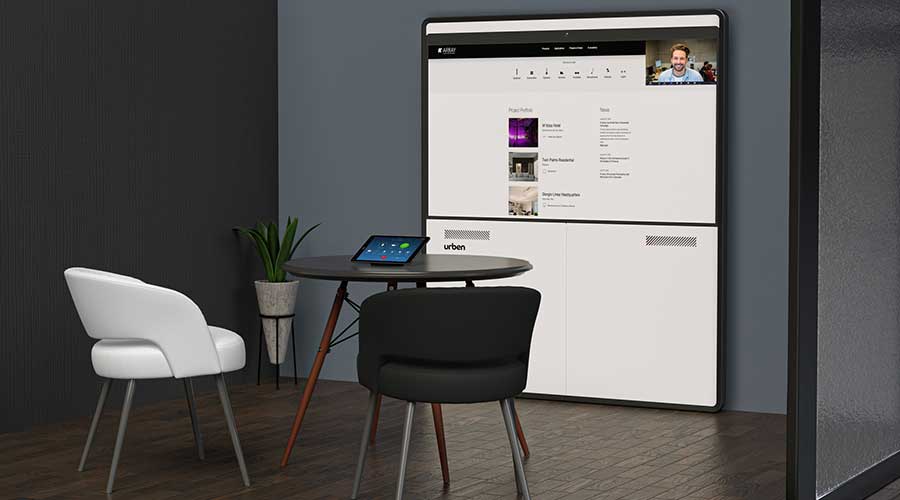
Modern Work Styles Have Changed. Can Your Spaces Keep Up?
CONFERENCE ROOMS ARE OUT, HUDDLE SPACES ARE IN... HERE’S WHY.
A lot has changed in the workplace since the days your grandpa or dad put on a tie, suit coat and hat and headed out the door to the office day after day. Every day is casual Friday and employees are just as likely to work from a coffee shop as a desk. And there are other, more significant changes that go deeper than the surface. The way people actually do their work—and want to do their work—has evolved as well. To get the most creativity, innovation, and productivity out of your workforce, you have to create an environment and corporate culture that matches employees’ preferences and expectations. Many companies have discovered that huddle rooms are the key to letting employees work how they want, which in turn means companies get what they want out of their employees. Below are some key ways work styles have evolved and how huddle rooms can help you capitalize on those changes.
HUDDLE ROOMS AND THE RISE OF THE IMPROMPTU MEETING
Regularly scheduled status meetings where the purpose is to update everyone on the work you’ve done are being replaced with impromptu collaborative meetings where work actually gets done. That change requires different work spaces and tools. In today’s fast-paced corporate culture, employees want to gather the team the moment inspiration strikes or a question arises. Instead of letting hot ideas cool off or simple questions turning into full-blown issues because there is no way to address them quickly, huddle rooms equipped with collaboration tools can become incubators where creativity and innovation thrive. By replacing large conference rooms with smaller huddle spaces, you create more room for people to meet how and where they want. Instead of tying up a big boardroom for just four or five people to get together, these smaller huddle spaces are tailored to the smaller teams that tend to dominate today’s work landscape. Huddle rooms also lend themselves to a relaxed layout (many huddle rooms are designed more like lounges than formal meeting spaces) that better match the less formal, ad hoc way employees prefer to hold meetings.
FLEXIBILITY OR BUST
Millennials represent 50 percent of the workforce and that number is growing. And while previous generations put an emphasis on loyalty and predictability in the workplace, according to Wainhouse Research, 90 percent of 35-year-old workers consider flexibility in the workplace to be more important than anything else. For starters, that means flexibility to work where they want. Approximately 3.9 million employees currently work remotely 50 percent of the time or more, and up to 90 percent of employees would prefer the option to work remotely. But modern employees want more than just an updated telework policy. They also want the flexibility to work how they want. Millennials prefer to work in teams, and they want those teams to be empowered with the same kind of intuitive collaboration and communication tools they use in their personal lives. A recent study found that 32 percent of Millennials collaborate on phones, tablets and smartwatches, 40 percent of Millennials prefer online meetings, and 45 percent of Millennials would rather use email, text or chat to communicate with team members. A properly equipped huddle space can meet all these flexibility expectations. Video conferencing solutions allow remote employees to collaborate face-to-face with their team members in the office, and wireless connectivity allows in-person team members to share content with the group from their personal devices. Collaborative apps and platforms paired with tools such as interactive whiteboards and displays allow remote and in-person employees to see and interact with the same content in real time.
WHAT’S IN IT FOR YOU?
Unused and underused spaces that do not align with employee work styles cost money. Many companies have found that optimizing their physical space reduces real estate costs. But perhaps most significantly, by tailoring your work spaces to your employees’ work styles, you can improve employee engagement and increase productivity and innovation within your organization. Understanding exactly what your employees want is the first step to getting it right. “In designing any spaces, it’s important to talk with the end users who use the respective space,” said Maria Cody, VP of Sales and Business Development at Level 3. “Ask them what works, what doesn’t and what they wish they had to make them more productive. All that information helps drive the solution.”
To get an idea of the solutions available to you, and which ones might be the best fit for your employees’ and their work styles, reach out to us here or click the chatbox below to connect instantly. We look forward to working with you!

